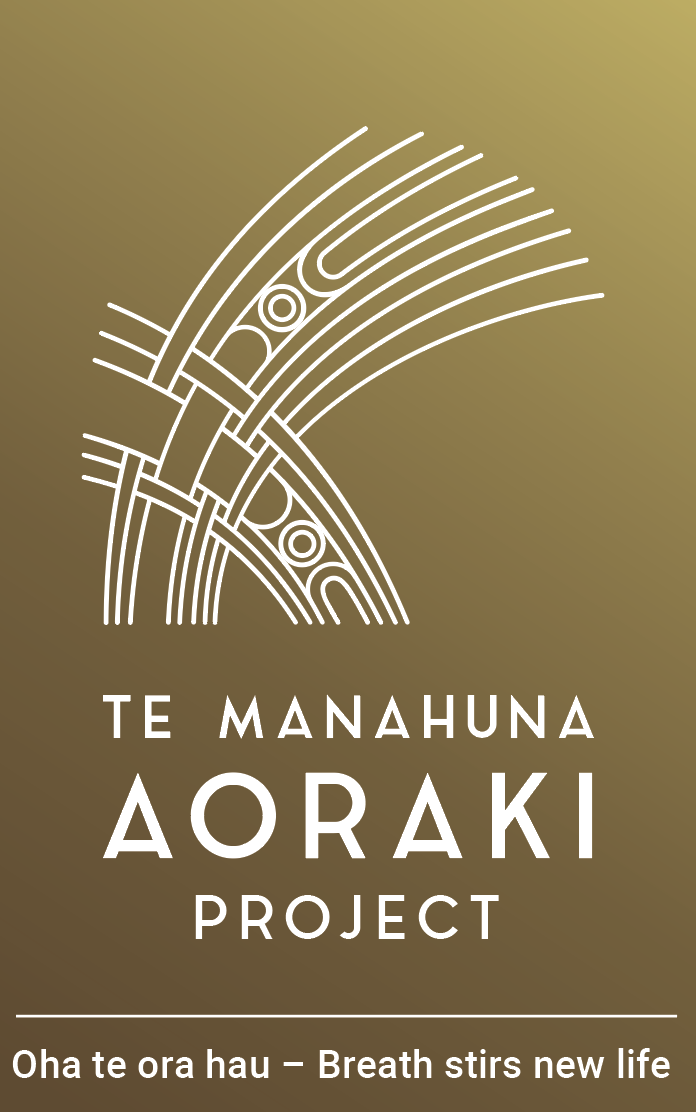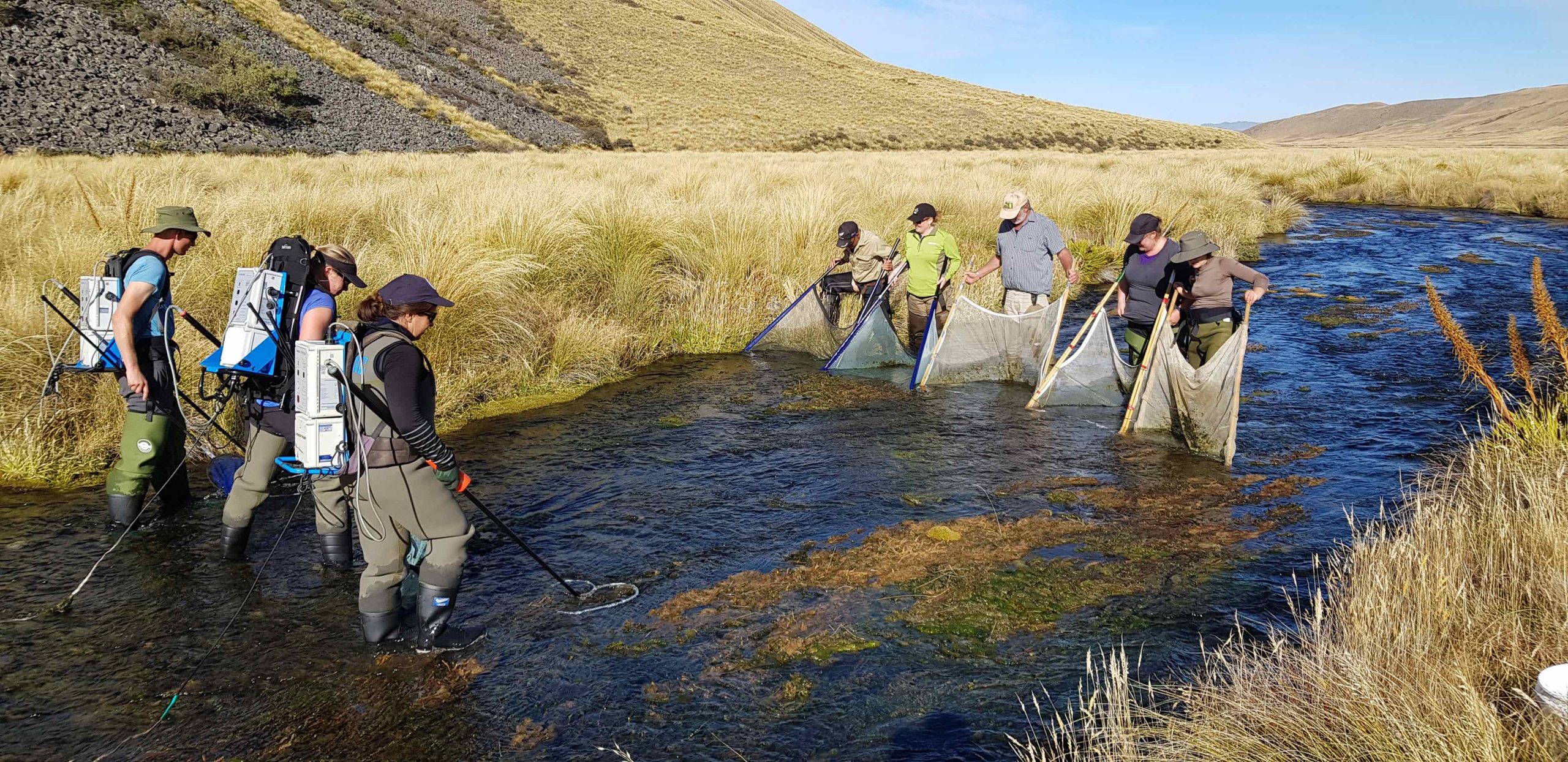Iwi are leading this project and members of the Te Manahuna Aoraki team have visited Fork Stream, a beautiful spring fed waterway situated on the 17,000 ha of land managed by the New Zealand Defence Force at its Tekapo Military Camp to see how they are tackling the problem. Two weirs have been built on the stream as part of a partnership between NZDF, DOC and Environment Canterbury (ECan) to protect rare non-migratory galaxias like the upland longjaw galaxias.
The TMA team watched as a line up of ECan and DOC staff with big nets faced another group with electric fishing units. Rubber boots were a necessity as they worked their way downstream collecting the stunned fish. Later, native fish were returned to the stream while the mixture of brown and rainbow trout that were collected were relocated.
The weirs create diversions to prevent invasive trout moving up the waterways, and improve the passages for native fish. Ecologist and freshwater fish expert Dr Rose Clucas said the stream was particularly important for species like the upland longjaw galaxias which use this area as spawning habitat. “This is rare habitat and it supports what are becoming increasingly rare species and we are here today to have a look at it and to try and understand it better,” she said.
TMA board member and rūnaka representative David Higgins says he was impressed to see what was happening on Defence Force land. “Protecting native fish is very important and they are doing extremely well. We are fortunate to have Dr Rose Clucas involved in this project and are well equipped tribally to be part of the process,” he said.


